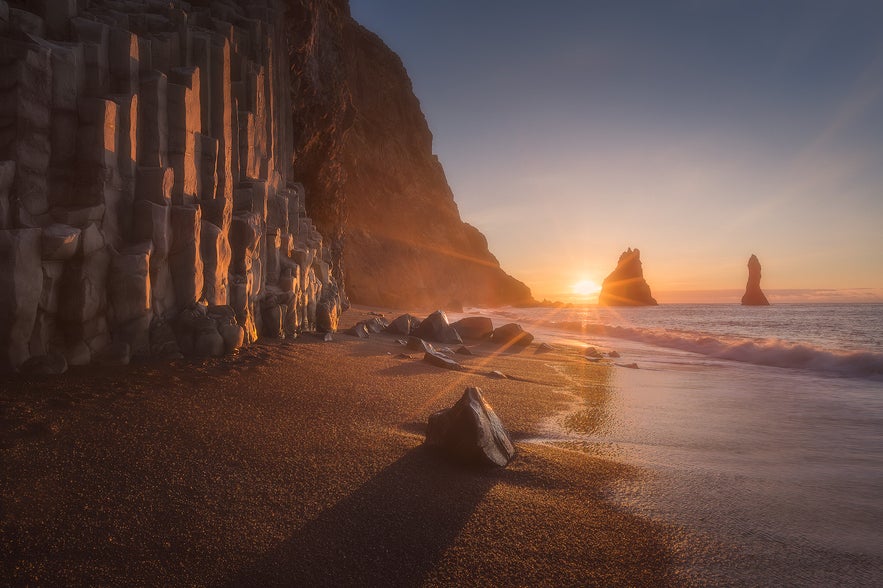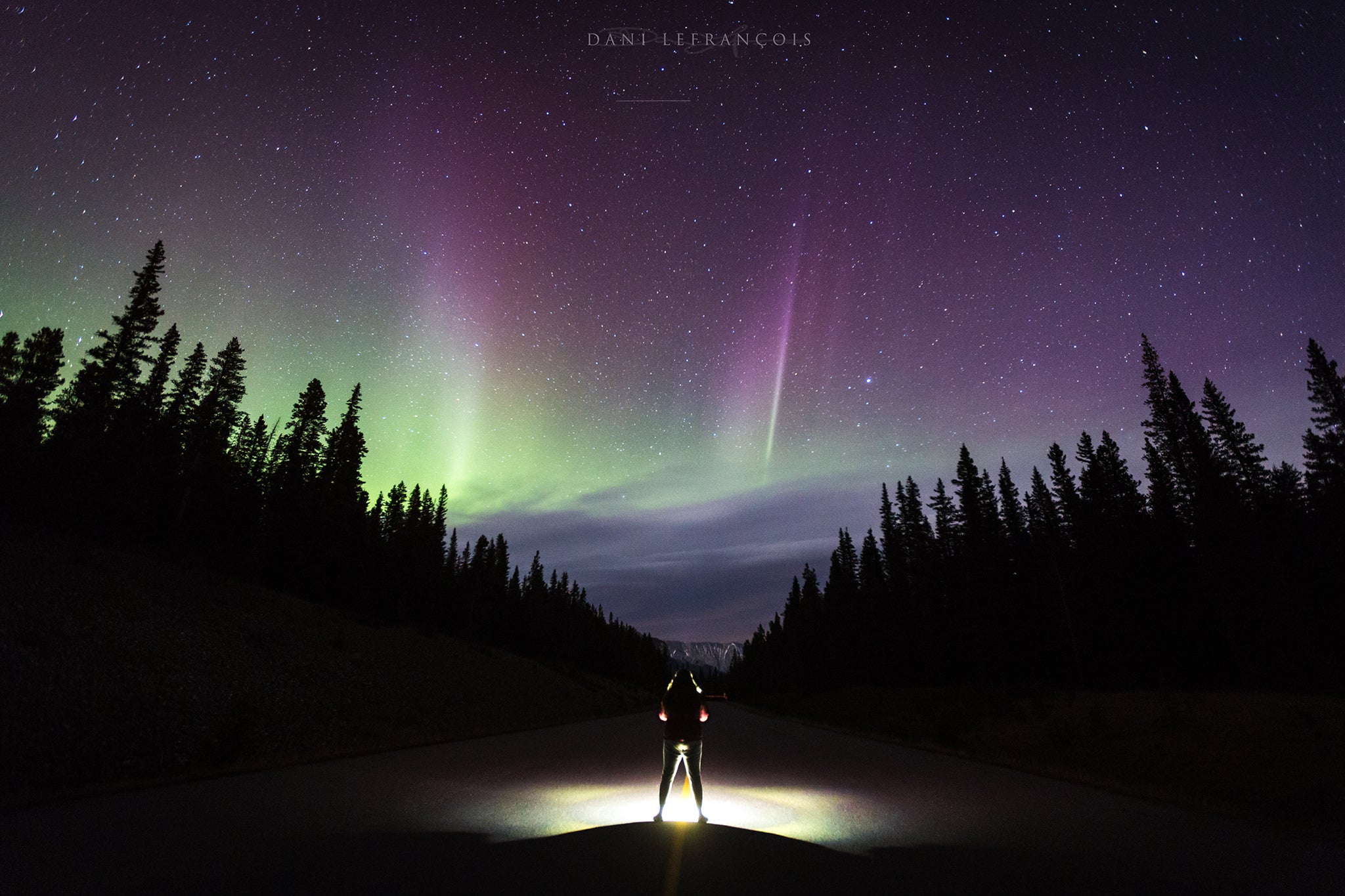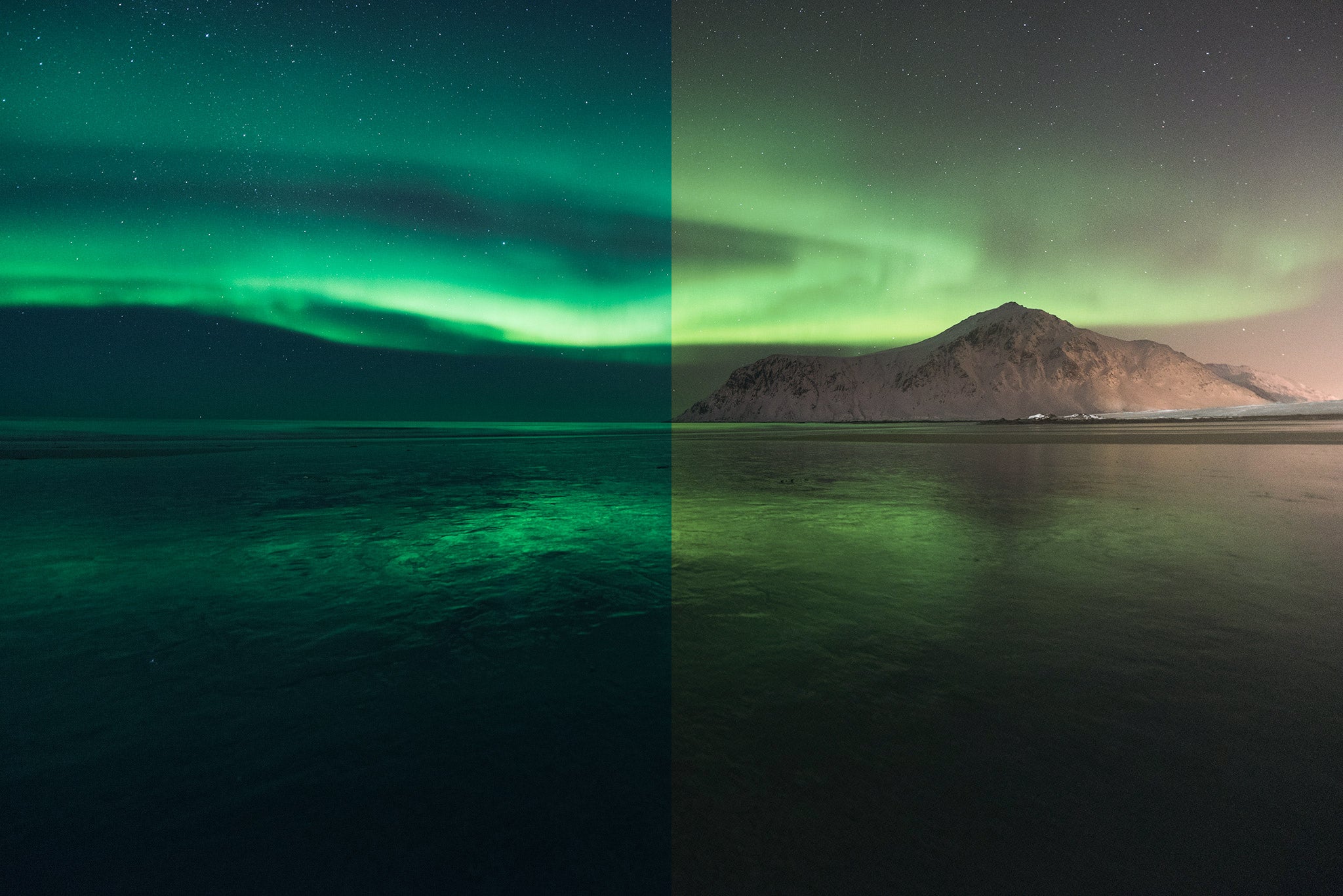
The Reynisfjara black sand beach is one of the best places in Iceland for landscape photography. Situated on the south coast near the small fishing village of Vík í Mýrdal, it has been voted one of the top non-tropical beaches in the world and is well-known for being photogenic throughout the year.
- Check out these articles on Photography Techniques
- See these 25 Tips for Creative Beach Photography
To help you prepare for your photography trip, we’ll take a look at what makes this beach so special and share with you everything you’ll need to know to increase your chances of taking home an amazing photo from this iconic location in Iceland.
A Top Location for Landscape Photography
With its moody atmosphere, fascinating rock formations and volcanic black sand, it’s no surprise that Reynisfjara tends to draw visitors to Iceland from all over the world.
Over the years, this beautiful beach has emerged as a must-visit location for photographers seeking to capture the essence of the dramatic landscapes that this tiny island nation is known for.
What makes this beach so attractive is that it offers a staggeringly picturesque view of the Reynisdrangar sea stacks close to the shore, rising 66 metres high from the roaring waves of the Atlantic Ocean.
According to Icelandic folklore, these sea stacks are the remnants of two trolls, who were turned to stone by the rising sun as they tried to pull a stolen ship to the shore. Those with a keen eye may also recognise them as filming locations from scenes in Season 7 of ‘Game of Thrones’, as well as the movies ‘Star Trek: Into Darkness’ and ‘Rogue One: A Star Wars Story’.
In addition to the sea stacks, looming over the beach are the spectacular hexagonal basalt columns of the Garðar cliff face, which provides a home for nesting seabirds such as puffins, Arctic terns, fulmars and guillemots. The cliff itself is one of the most photographed places in Iceland and is great for bird photography.
Not only that but carved into the cliff wall by the pounding waves that sweep in from the Atlantic Ocean is the stunning Hálsanefshellir sea cave. The dark basalt columns make for a truly spectacular sight, adding to the mystery of the surrounds and cementing the Reynisfjara black sand beach as a top location for landscape photography in Iceland.
 Reynisfjara black sand beach is one of the top locations for landscape photography in Iceland. Photo by: 'Felix Röser'.
Reynisfjara black sand beach is one of the top locations for landscape photography in Iceland. Photo by: 'Felix Röser'.
Recommended Camera Gear for Photography at Reynisfjara
-
A reliable DSLR
-
Wide angle zoom lens (16-35mm), mid-range zoom lens (24-70mm) and a telephoto lens (200-600mm) or extender
-
Tripod
-
Graduated neutral density filters
-
Memory card
There are a number of different compositions to be obtained at the Black Sand Beach, both with and without the Reynisdrangar sea stacks in frame. As such, you’ll need a variety of different lenses to accommodate for distance and creativity.
If you really don’t want to carry all of your lenses, then a mid-range zoom lens or a telephoto lens will suffice.
Keep in mind also that while graduated neutral density filters are not necessary, they can help to balance the exposure between the foreground and background, particularly if the sky is very bright.
Best Camera Settings for Photography at the Black Sand Beach
Photography at the Reynisfjara black sand beach can be both challenging and fun.
The most dramatic images from this location involve capturing the power of the waves as they sweep in from the Atlantic Ocean, pounding into the Reynisdrangar sea stacks. For this, you’ll need to stand at a distance with your telephoto lens zoomed in and shoot at a faster shutter speed.
A good trick is to never go below 1/250th of a second, though you may need to shoot even faster for larger waves. In this case, you may need to shoot with a higher ISO to accommodate for faster shutter speeds in order to freeze the motion of the water effectively, especially if the wave takes up a large amount of your frame.
 A telephoto lens is great for shooting the waves rolling around Reynisdrangar sea stacks. Photo by: 'Iceland Photo Tours'.
A telephoto lens is great for shooting the waves rolling around Reynisdrangar sea stacks. Photo by: 'Iceland Photo Tours'.
It’s also a good idea to move around the sea stacks while taking note of the position of the sun. If the sun aligns with one of the edges of the sea stacks, then it will be possible to shoot them with a sunstar.
To get a sunburst, close your aperture as you shoot. Taking a shot at f/16 will suffice. This can make a nice focal point for your image, though the quality of the sunstar will depend a lot on your lens.
 Another view of the Reynisdrangar sea stacks, taken with a telephoto lens. Photo by: 'Albert Dros'.
Another view of the Reynisdrangar sea stacks, taken with a telephoto lens. Photo by: 'Albert Dros'.
Photography Compositions at Reynisfjara Black Sand Beach
As soon as you arrive on the beach, you’ll notice the breathtaking hexagonal basalt columns that make up the cliff of Garðar to your left. From there, you will also have an incredible view towards the Reynisdrangar sea stacks.
The most popular composition is to use the jagged rock formations with the black sand beneath as leading lines into the Reynisdrangar sea stacks in the distance. For this, you will need a mid-range zoom lens, such as a 24-70mm.
A wide angle lens will allow you to exaggerate the effect of the lines, though the sea stacks will seem even smaller in the distance.
From this vantage point, you’ll find some rocks in the sand that can also be used as subjects within the foreground. The trick is to get down low with your camera, though you’ll risk making the sea stacks seem insignificant if they are too far away.
 A telephoto lens can compress the scene at Reynisfjara black sand beach. Photo by: 'Iurie Belegurschi'.
A telephoto lens can compress the scene at Reynisfjara black sand beach. Photo by: 'Iurie Belegurschi'.
Standing this far back, you’ll also be able to use a telephoto lens to compress the foreground and the background, making the sea stacks seem closer and bigger than they actually are. This is a good option if you’re not comfortable walking along the beach or if the tide is high.
 A dramatic shot of the Reynisdrangar sea stacks. Photo by: 'Mads Peter Iversen'.
A dramatic shot of the Reynisdrangar sea stacks. Photo by: 'Mads Peter Iversen'.
When the tide is low, it is possible to walk on part of the beach. Along the way, you’ll pass the Hálsanefshellir sea cave to your left, which is another spot that offers an amazing composition.
Try shooting from within the cave, using the arch of the mouth of the cave to frame the sea stacks during sunrise. For this shot, you may need a wide angle lens.
If you stand further back in the cave, then you’ll have the chance to take a panorama that captures all of the details within the rocks that form the walls.
From the cave, you can continue walking along part of the beach. A mid-range zoom will allow you to capture the waves rolling in around Reynisdrangar and the closer that you get, the more dramatic it will seem.
Note: While it used to be possible to reach the rocks on the other side of the beach, this area has now been permanently closed as of August 2019 due to recent landslides.
Best Time to Visit Reynisfjara Beach for Photography
Reynisfjara is one of the most famous locations for photography in Iceland, so you can expect it to be crowded if you visit during the day, particularly during the summer months.
Arriving early in the morning before sunrise means that there will be fewer people on the beach, so you’ll be able to work out a composition without anyone walking into your frame. This is the case throughout the year, even when the sunrise occurs at around 3am during the height of summer.
As the Reynisfjara Black Sand Beach is situated to the west of the Reynisdrangar sea stacks, it is a good spot to shoot the sunrise.
You’ll know when it’s time to pack up, as others will arrive and begin to climb the basaltic columns of the cliff face for selfies. More likely than not, they’ll also wander into your shot. Thankfully, the tour buses don’t tend to get to Reynisfjara until after the sun has risen, so you’ll have a bit of time during which the only people you’ll have to contend with are other landscape photographers.
 The view is rather nice from Víkurfjara on the other side of Reynisfjara black sand beach. Photo by: 'Iurie Belegurschi'.
The view is rather nice from Víkurfjara on the other side of Reynisfjara black sand beach. Photo by: 'Iurie Belegurschi'.
If you’d rather sleep in the mornings, then don’t despair; sunset at the Reynisdrangar sea stacks can also be very special, though it is best to photograph them from their eastern side instead. Access is via the Víkurfjara beach in town. While this beach also has spectacular black sand, it is much less photogenic than its neighbour, Reynisfjara. However, it is a good spot to make the most of winter sunlight.
- See also: Ultimate Guide to Sunrise Photography
Summer Photography at Reynisfjara Black Sand Beach
Perhaps the best time to visit Iceland for photography at the Black Sand Beach is in summer from June to August, when the Midnight Sun provides nearly a full day of light to work with. This means that you’ll have more than enough time to aim for the perfect shot during the magical golden hours before sunset.
There is also the least amount of rainfall during August, though the weather can still be unpredictable, even in summer.
Aside from the weather, one of the major reasons why people love to visit Reynisfjara for photography in summer is that there are hundreds of puffins that nest high upon the basaltic columns of the cliff face. They spend most of the day out at sea catching fish, so the best time to photograph them is in the evening, when they return to the cliff to roost for the night.
To capture photos of the puffins, you’ll need a telephoto lens in the range of 400mm or more.
Northern Lights at Reynisfjara Black Sand Beach
Reynisfjara is a good location to photograph the Northern Lights, especially if you can capture them dancing over the Reynisdrangar sea stacks.
Whether you situate yourself on the black sand beach itself or over on the eastern side at Víkurfjara will depend solely upon the direction of the Aurora.
 The Northern Lights are best shot from Víkurfjara. Photo by: 'Iceland Photo Tours'.
The Northern Lights are best shot from Víkurfjara. Photo by: 'Iceland Photo Tours'.
For the best chance of seeing and photographing the Northern Lights above Reynisdrangar, visit Iceland during the autumn and winter months, from October until March.
Staying Safe During Your Photo Shoot at Reynisfjara
While Reynisfjara is an amazing beach for landscape photography, it is also notorious for being one of the most dangerous places in Iceland. Take heed of the large warning signs as you make your way onto the beach from the car park. These signs are there to let you know to stay a safe distance away from the water.
The reason for this is that Reynisfjara is well-known for its ‘sneaker waves’. These are large waves that can sometimes appear without warning, washing up further onto the beach than you would expect. They are difficult to predict and often come in when you’d least expect, much higher than you’d think.
Some waves can be knee-height, while others have been known to come up over the waist. These surges of water can knock you down and even pull you out with strong rip currents into the surf. There have been a number of accidents at Reynisfjara where people have been dragged into the water by sneaker waves and severely injured, while a few other people have been killed.
If you do find yourself caught by a sneaker wave, then don’t try to fight the current. The sand beneath your feet may shift, so try to anchor your feet into it deeply. Conserve your energy and focus on staying upright or keeping your head above water until rescuers arrive. In this case, it is best to concentrate on your own safety rather than to panic about your camera gear.
 It can be dangerous at Reynisfjara, even when it seems calm. Photo by: 'Iceland Photo Tours'.
It can be dangerous at Reynisfjara, even when it seems calm. Photo by: 'Iceland Photo Tours'.
To ensure your safety and to minimise the risk of saltwater damage to your camera gear, stay at least twenty to thirty metres clear of the water at all times. Do not attempt to stand in the water or near the waterline, as you may find yourself running for your life when the waves come crashing in.
It is a good idea to keep one eye on the ocean whenever you are lining up for a shot, so as not to be caught unaware. Keep in mind also that during high tide, the Hálsanefshellir cave and the stretch of beach that leads towards the Reynisdrangar sea stacks can become inaccessible.
Note: As of August 2019, landslides have occurred on the eastern part of Reynisfjara, resulting in a permanent closure of part of the beach. However, the cave and the basalt columns remain accessible. Authorities believe that further landslides may occur in this area so follow the signs for your own safety.
How to Get to Reynisfjara Black Sand Beach
Reynisfjara black sand beach is located about 180km east of the capital city of Reykjavík.
The drive there takes about 2 and a half hours, making it a popular destination for day trips along Iceland’s south coast.
The black sand beach is easily accessible via the Ring Road and is well-signed. There is a small car park which is shared with tour buses. In the summer months, the car park can get very busy, with many people parking all the way up the street and taking a short walk to access the beach.
Next to the car park, you will find the Black Beach Restaurant, where hot coffee and food is available. There are also toilet facilities outside the restaurant, which may be used for a small fee payable by credit card.
About the author: Serena Dzenis is a landscape photographer based in Iceland. You can find more of her work on her website or by following her on Facebook and Instagram.
You too can capture the amazing volcanic black sand beach of Reynisfjara on Iceland's magical south coast! Join our 3 Day Photo Tour of the South Coast & Vatnajokull National Park.












